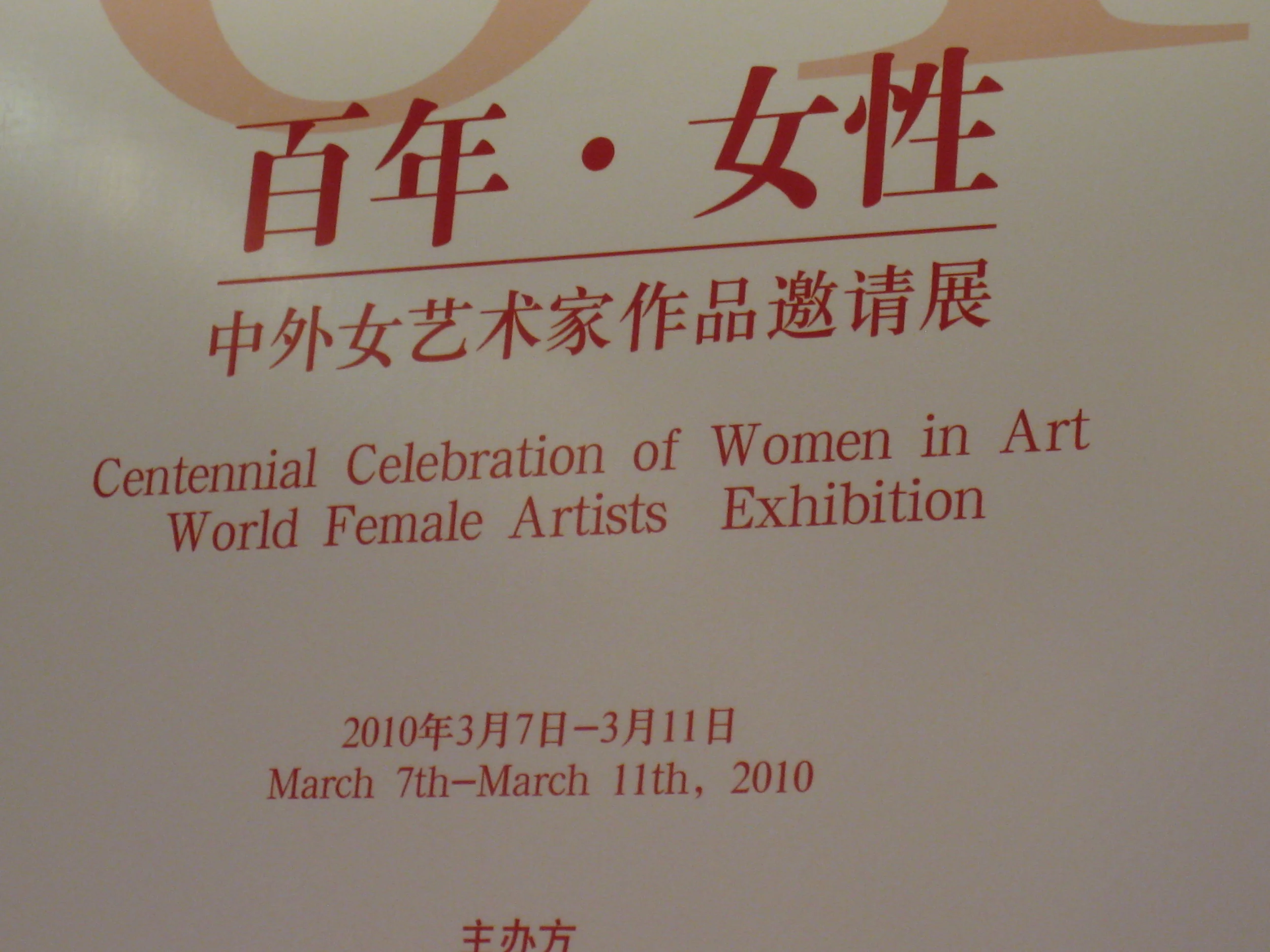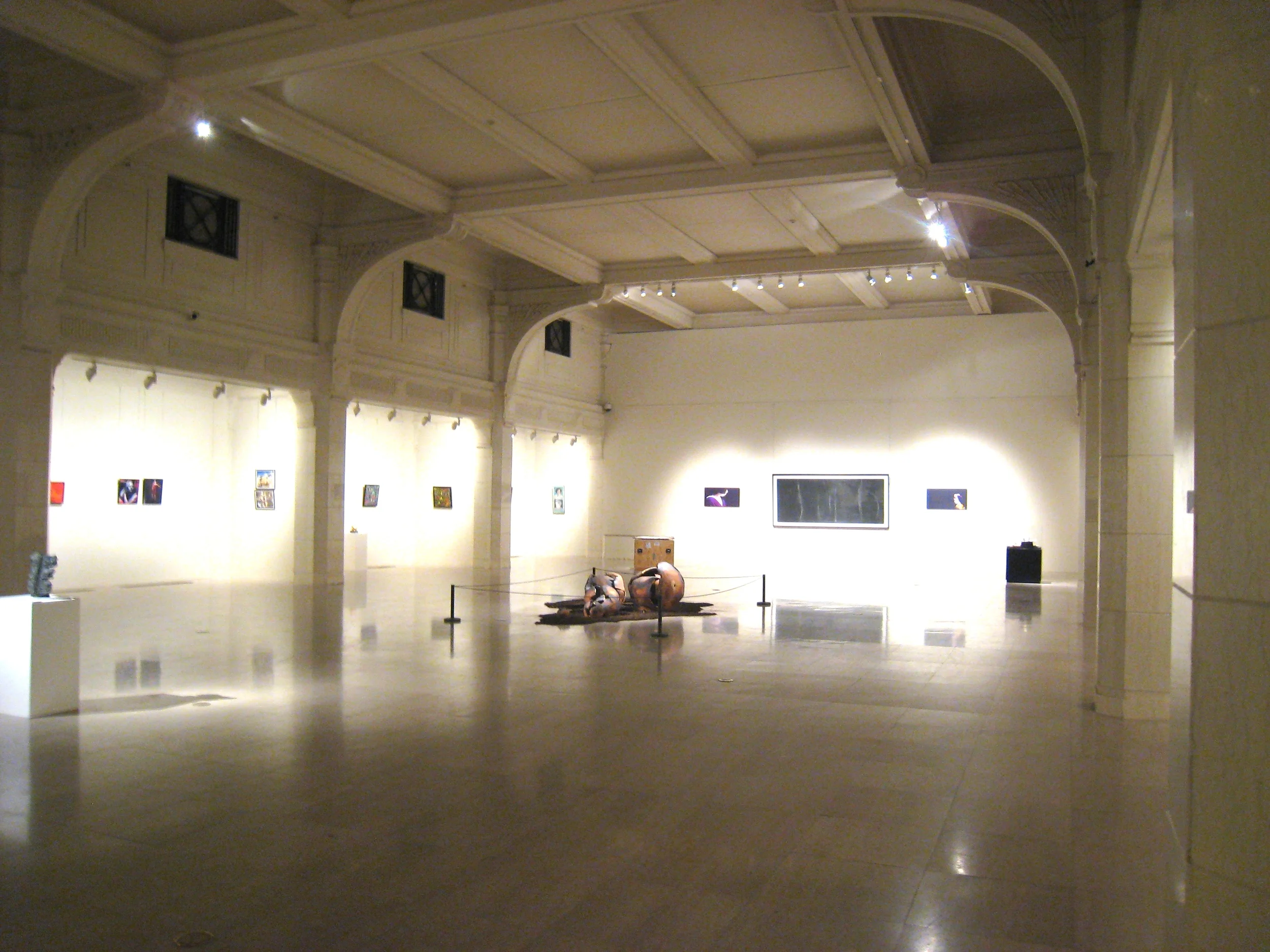Beginning her relationship with a China audience in 2009, Caitlin Reilly’s Suspended Arrival was exhibited at The Elisabeth de Brabant Art Center in Shanghai. These works on paper laid the foundation for the many paintings, collaborations, installations residencies and exhibitions that followed, all created in Shanghai between 2009 and 2015,
Exhibitions
Silent Music 195 Anfu Lu Shanghai China
Encrypted 195 Anfu Lu Shanghai China
Spring 195 Anfu Lu Shanghai China
Gestural Antics 195 Anfu Lu Shanghai
Henkes Commission Shanghai China
Between the sheets Artist Books Exhibition Galery East Australia
Village of Bliss Fu Lu Cun 3 Hunan Lu Shanghai China
Looking Up From the Other Side of the World Xuhui Art Museum China
The Ground Beneath Our Feet EDB Art Pavillion at 1933 Shanghai China
Centennial Celebration of Women in Art Shanghai Musuem of Art China
Suspended Arrival Elisabeth de Brabant Art Center Shanghai China
Drawing for me is no less or more important than any other medium. It is a way in which I fill space, remember experiences and respond to this incredible world in which we live.
The documentation below includes images and responses from Artists exhibitions and works made between 2009 -2014 in China.
Commentary by Domenico de Clario and Dr Lyndall Adams
Suspended Arrival (the double happiness of falling into drawing)
Like many Australian artists Caitlin Reilly’s practice has evolved from the slow gaining of particular insights (manifesting as textured surfaces through her gifts as a skilful and sensitive mark-maker) into the complex socio-political and cultural realities that characterise the contemporary world.
Through a combination of geography, social conditions and a natural curiosity to understand the fragile dynamics that hold our cultural realities together, Australians probably travel more extensively than most. And many Australian artists have extended the terms of what used to constitute the obligatory nineteenth-century artists’ tour to England, France and Italy to now include Asia, South America and the Pacific.
Caitlin Reilly’s particular sensibility is specifically drawn to the timeless tradition of Chinese drawing. One of the distinguishing features of Chinese drawing is its insistence on everyday practice, everyday action, as the foundation of its ultimate aim, which might de defined as the achievement of excellence through the forgetting of self, through its absorption into the greater context.
The common criticism of this kind of approach is that it can result in what to some might seem a kind of blandness. But this blandness functions as the primal generator of new and unexpected thoughts, the generative space in which the singularity of new tastes and unexpected sensations can be confronted and engaged with at one’s own pace.
Here experiential time frames are not imposed as an embedded aspect of an engagement with each singularity but are left to individuals to negotiate according to their willingness and capacity to do so.
And certainly the particular blandness deliberately cultivated over fifteen centuries ago by Chinese thinkers and artists, through an ultimate refining of the process of subtraction, might be reconsidered as a helpful (though probably in the end ineffective) purgative in order to render the process of addition our global culture has so heavily embraced a little less indigestible.
The constant journeying Caitlin Reilly has committed significantly influences the construction of a practice whose shape might be rhizomatic, with its underlying global connections manifesting uniquely through her art as a universal language.
As a consequence the drawings she makes in the tradition of the Chinese masters are also undeniably exquisite twenty-first century creations.
The recent ‘Altermodern’ exhibition at the Tate in London examines this very phenomenon. In the catalogue notes Nicholas Bourriaud argues that compelling contemporary practices manifest through:
…the bonds that text and image, time and space, weave between themselves responding to a new globalised perception. Traversing a cultural landscape saturated with signs and creating new pathways between multiple formats of expression and communication; work which cannot be easily anchored to a specific time.
This leads to the question of what is contemporary. Without nostalgia, artists trace lines and connections through time as well as space. It is not the modernist idea of time advancing in a linear fashion, nor the postmodern time advancing in loops, but a chaining or clustering together of signs from contemporary and historical periods which allows an exploration of what is now.
It is significant that a number of today's artists operate in a space-time characterised by this "delay", playing with the anachronistic, with multi-temporality or time-lag. We could say that the ageless drawings of Charles Avery, the paintings of Spartacus Chetwynd or Shezad Dawood, the iconographic materials of Olivia Plender, Peter Coffin, Matthew Darbyshire and Ruth Ewan, or Tacita Dean's and Joachim Koester's references to the origins of the cinema – like those of Navin Rawanchaikul to Bollywood posters – all deal in the aesthetics of heterochrony: their work displays none of the obvious signs of contemporaneity, save perhaps in the process of their constitution, in the assembling of their parts into meaningful networks.
Here what is "contemporary" is the structure of the work, its method of composition: the very fact that it brings together heterochronic elements – delay (analogous to "pre-recorded") coexists with the immediate (or "live") and with the anticipated, just as documentary coexists with fiction, not according to a principle of accumulation (postmodern baroquism), but with the aim of revealing our present, in which temporalities and levels of reality are intertwined.*
In her ‘Suspended Arrival’ series Caitlin Reilly manages to achieve exactly this vital equilibrium, bringing together various heterochronic elements; a personal ‘live’ iconography (her birth date interwoven with the Chinese number denoting a ’double happiness’ and further interwoven with the name of a popular brand of cigarette); an oblique yet humble homage to Chinese drawing and a sensitive referencing to both a Modernist master like Mark Rothko and the post-Modernist Spaniard Tapies.
There is a further ‘temporality’, as Bourriaud describes it, to be taken into account; the artist was deeply affected by the viewing of ‘the falling man’, the documentary describing in slow-motion footage the fall of one of the victims of 9/11 from the top of the North World Trade Tower
In Caitlin Reilly’s own words:.’the image and the story behind it affected me deeply; time for an instant was obliterated by an eternal present. This sense of eternal presence informed the studio processes engaged in for this collection of works. Unlike a photo arresting time, drawing moves along with time arriving each second, each moment, each mark, a suspension of process and a continuous unfolding.
The evolution of Suspended Arrival has spanned more than two years, originated in my studio in Australia and taking form in my current home here in Shanghai, China. The metamorphosis of my work over this period has culminated in the addition of small artist’s books and two larger pieces that seemed essential in order to reinforce the original sentiment of falling.
For me, here in Shanghai it is a continual process of merging into another culture whilst simultaneously departing from my own and surrendering to the motion of the natural rhythm and daily order. Amongst the chaotic energy that at first seemed so incredibly frenetic and random I have found a flow that resides amongst these streets. Peace is simply obtained by moving with the natural order rather than moving against it.
‘Suspended Arrival’ is material evidence derived from this intense, multilayered experience of place made tangible by the simple repetitive act of drawing.
Caitlin Reilly’s practice attempts much and her drawings achieve a rare equilibriu
In between private and pubic, global and local. In the end she is engaged in a committed discourse with time and through this dynamic the work virtually makes itself. Daring to present itself to the world as bland outer face, its inner riches reward the viewer, much in the way close inspection of Chinese drawing always has.
In a sense this commitment to seeing facilitates an endless ‘falling’ into the drawing, paradoxically eternally suspending any sense of an arrival, as we engage in the journey itself.
We are through this process rewarded by the artist with a ‘double happiness’; the joy of falling free with no fear of impact, for our ‘arrival’ is perennially suspended, and the subsequent exhilaration of being able to experience the world with no thought of provenance or destination.
Domenico de Clario
Director
Australian Experimental Art Foundation
*Nicolas Bourriaud, Altermodern: Tate Triennial, Tate Publishing, 2009 (p21).
This collection of works, Suspended Arrival circumvents language barriers with the seamless elegance of the visually literate. The inadequacy of any vocabulary to describe the works of Caitlin Reilly is no more apparent than in this exhibition of works on paper. This is a visual language, a language of the poetic, in which as audience we engage in a discourse that begins with the poetics of a space - clean and white where our breath is suspended as we envisage the marks are made ... erased ... remade ... erased ... accumulated in residual layers of media to create a palimpsest. A story unfolds for us between our inhaled ... exhaled breath that we recognize immediately as suspension, deliberation, mediation and a meditation on the way in which Caitlin experiences the world.
The intentions and accents used in Suspended Arrival creates linkages that trace disparate elements drawn across cultures and influences and conflate the works into a visual feast, a lyrical journey and a seduction of the senses. When Caitlin Reilly says, “dreams too can be drawn,” it allows us an insight into a world where the immediacy of the mark-making process expands into a visual discourse that includes our dreams.
Apparent and palpable are the experiences with which Caitlin has permeated this collection of drawings. The physicality, the immediacy and the efficacy of Caitlin’s struggle to impart her emotional responses spanning a two-year period gives us great insight into the world of the mark. We read the material trace of activity along her journey from Byron Bay, Australia, to Shanghai, China with all of the stops and lines of flight along the way.
Dr Lyndall Adams
Associate Lecturer, Studio Drawing
School of Arts and Social Sciences
Southern Cross University
Australia





















